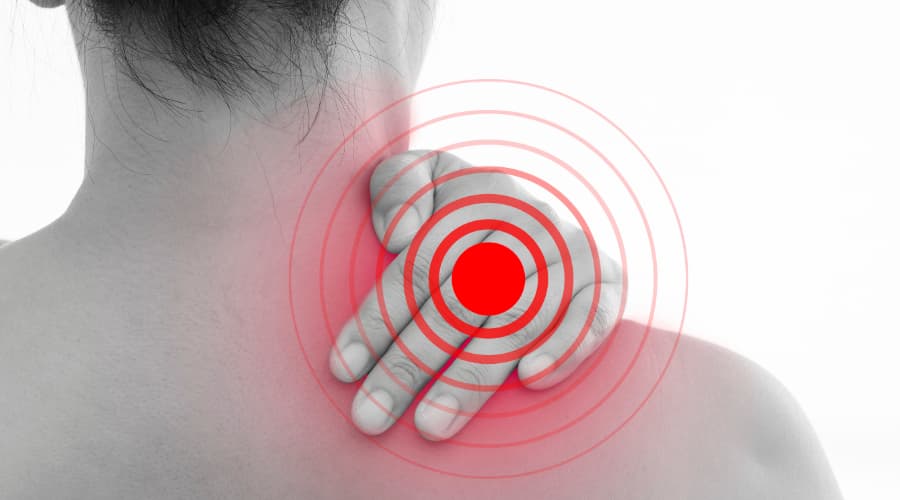Knee pain is a common complaint arising from various conditions and activities. At Vale Health Clinic, our experienced chiropractors begin by conducting a thorough knee examination to determine the cause of your discomfort. This involves asking detailed questions about your symptoms, including:
- How long have you experienced knee pain?
- Have you sustained any recent injuries?
- What is your age?
- What activities do you regularly participate in?
- Have you had recurring knee pain?
This information, combined with a physical examination, helps us accurately diagnose the source of your pain, which may not always originate from the knee itself.
Common Groups Affected by Knee Pain
Knee pain is prevalent among:
- Athletes
- Cleaners (Housemaid’s Knee)
- Cyclists
- Older adults
- Runners
- Individuals with sports injuries
Common Causes of Knee Pain
Activities that frequently cause knee pain include:
- Cycling
- Kneeling
- Running
- Sitting
- Walking downstairs or downhill
Pain in the Front of the Knee
Pain over the front of the knee, often related to the area around the kneecap, can stem from various issues. Sitting for long periods, such as while driving or cycling, may be particularly painful. The patella (kneecap) plays a crucial role in knee function, as it enhances the leverage of the knee joint, increasing the strength of leg extension by about 30%.
Problems Associated with the Kneecap
Issues with the kneecap typically cause pain around it. You might notice discomfort when walking downstairs, sitting for prolonged periods, or kneeling. Common conditions include:
Chondromalacia Patellae (Runner’s Knee):
This occurs due to cartilage irritation on the kneecap’s undersurface.
Osgood-Schlatter Disease:
This condition, predominantly seen in teenagers, causes a painful lump on the tibia at the front of the knee.
Prepatellar Bursitis (Housemaid’s Knee):
It is characterised by swelling and inflammation over the front of the knee. It commonly affects individuals who kneel for extended periods, such as carpet layers and gardeners.
Patellar Tendon Inflammation:
This condition arises when the patella does not track evenly within its groove on the femur.
Kneecap Dislocation:
When the kneecap dislocates, it must be realigned into its groove. Treatment varies depending on the diagnosis, emphasising the importance of consulting with one of our chiropractors for accurate diagnosis and tailored treatment.
Pain on the Inside of the Knee
Pain on the inside (medial side) of the knee is often due to a meniscus injury. The menisci are tough cartilage pieces between the thigh bone (femur) and shin bone (tibia), with the medial meniscus on the inner side. Meniscus tears are common in athletes and older individuals with brittle cartilage. Symptoms include pain, swelling, joint locking, and soreness upon pressing the meniscus. Treatment depends on the injury’s severity and may range from surgery to rest and rehabilitation.
Pain on the Outside of the Knee
Pain on the outside (lateral side) of the knee can be caused by lateral meniscus tears or iliotibial band syndrome (ITBS). ITBS, common among cyclists and endurance athletes, involves inflammation of the iliotibial band—a fibrous tissue running from the hip to below the knee. Symptoms include pain, swelling, and a snapping sound when bending the knee. Treatment focuses on rehabilitating the hip, foot, and knee to ensure proper mechanics.
Pain in the Back of the Knee
Pain in the back of the knee may result from a Baker’s Cyst, a fluid collection.
Knee Instability and Giving Way
Knee instability, often due to stretched or torn ligaments, can cause the knee to give way. Arthritis or lower back problems with sciatica may also contribute to this sensation. Chronic mobility issues are often linked to arthritis, which causes joint surface irregularities, limiting mobility. Hamstring injuries may also affect knee mobility.
Preventing Knee Pain
Preventing knee pain involves a combination of lifestyle adjustments and proper exercise techniques. Here are some tips to help prevent knee pain:
Maintain a Healthy Weight:
Excess weight puts additional stress on your knees.
Exercise Regularly:
Focus on low-impact activities such as swimming or cycling to strengthen the muscles around the knee.
Use Proper Techniques:
Use the correct form to avoid unnecessary knee strain when exercising or lifting.
Wear Appropriate Footwear:
Shoes that provide adequate support can help maintain proper alignment and reduce knee stress.
Treatment Options for Knee Pain
Treatment for knee pain depends on the underlying cause. Common treatments include:
Rest and Ice:
Rest and ice can help reduce inflammation and pain in acute injuries.
Physical Therapy:
Targeted exercises can strengthen the muscles around the knee and improve flexibility.
Medications:
Over-the-counter or anti-inflammatory pain relievers can help manage pain and swelling.
Injections:
Corticosteroid injections may be used to reduce inflammation.
Shockwave Therapy
Extracorporeal Shockwave Therapy is a clinically proven treatment for soft tissue injuries. The treatment stimulates and effectively supports the body’s self-healing mechanisms.
Rehabilitation Exercises
Rehabilitation exercises are crucial in recovering from knee pain and preventing future issues. Some recommended exercises include:
Quadriceps Strengthening:
Straight leg raises, and quad sets can help strengthen the front of the thigh.
Hamstring Strengthening:
Hamstring curls and stretches improve the strength and flexibility of the muscles at the back of the thigh.
Calf Raises:
Strengthening the calf muscles can support the knee and improve balance.
Balance Exercises:
Standing on one leg enhances stability and coordination.
When to Call Us
It’s time to call Vale Health Clinic if you experience:
- Severe pain or swelling in the knee
- Inability to bear weight on the knee
- Knee instability or giving way
- Deformity or visible abnormalities
- Symptoms that do not improve with rest and self-care
For more details on how we can assist with your knee pain, please call us at 01892 543029. At Vale Health Clinic, our chiropractors are dedicated to providing comprehensive care tailored to your needs.
Related Articles
- There Are Many Reasons for Knee Pain
- Understanding Osteoarthritis of the Knee
- Shockwave Therapy For Running Injuries
- Plantar Fasciitis or Achilles Tendonitis
- Knee Exercises for Pain and Rehabilitation




